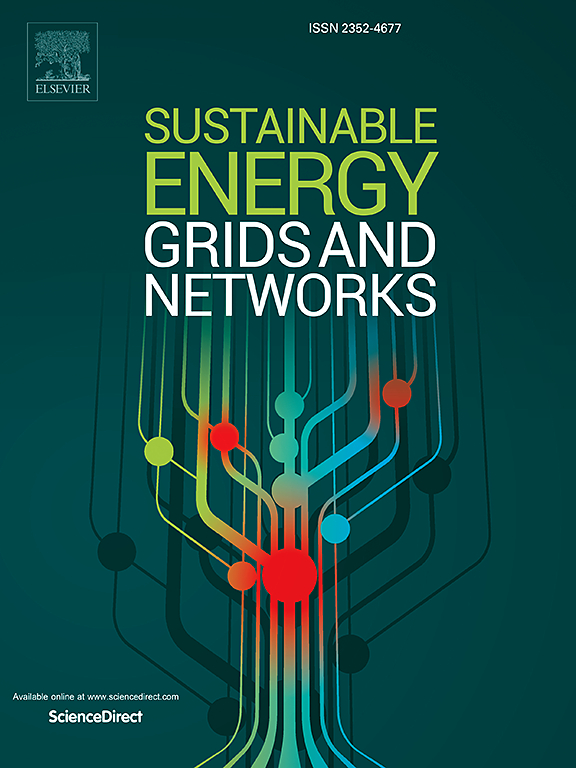分布式能源的时空协调与ISO和DSO操作的调节能力
IF 5.6
2区 工程技术
Q2 ENERGY & FUELS
引用次数: 0
摘要
本文提出了一种双层协同优化模型,用于协调配电系统中的分布式能源,以在日前电力市场中提供能源灵活性和调节能力。所提出的协同优化模型考虑了配电系统的物理约束,确定了上层问题的可交付能源灵活性和柔性负荷的调节能力,同时清除了下层问题的日前电力市场。为了解决所提出的双层模型,将低层问题替换为其Karush-Kuhn-Tucker (KKT)条件,将所提出的模型转换为单层非线性优化模型。然后,通过实现辅助变量和强对偶定理的组合,将所提出的模型表述为一个单级混合整数二阶锥规划(MISOCP)问题,使用商业求解器可求解。对一个IEEE测试传输系统在多种情况下与多个配电系统连接进行了仿真。研究结果验证了该模型在确定电力市场上可获得的最优能源灵活性和柔性负荷调节能力,同时保持柔性负荷的服务质量约束以及输配电系统的物理极限方面的有效性。这些观察结果还为不同的实体(如负载服务实体、聚合商和公用事业公司)提供了一个有希望的解决方案,以管理本地资源并优化其在电力市场中的投资组合。本文章由计算机程序翻译,如有差异,请以英文原文为准。
Spatio-temporal coordination of distributed energy and regulation capacity with ISO and DSO operation
This paper proposes a bi-level co-optimization model for coordinating Distributed Energy Resources (DERs) in power distribution systems to offer energy flexibility and regulation capacity in the day-ahead electricity market. The proposed co-optimization model considers the physical constraints of the distribution system and determines the deliverable energy flexibility and regulation capacity of the DERs and flexible loads in the upper-level problem while clearing the day-ahead electricity market in the lower-level problem. To solve the proposed bi-level model, the lower-level problem is replaced with its Karush–Kuhn–Tucker (KKT) conditions, converting the proposed model into a single-level non-linear optimization model. Then, by implementing a combination of auxiliary variables and the strong duality theorem, the proposed model is formulated as a single-level Mixed-Integer Second-Order Cone Programming (MISOCP) problem, solvable using commercial solvers. Simulations are carried out on an IEEE test transmission system connected to multiple distribution systems in multiple cases. The findings verify the effectiveness of the proposed model in identifying the optimal energy flexibility and regulation capacity of DERs and flexible loads that are available in the electricity market while maintaining the quality of service constraints of flexible loads, as well as the physical limits of power transmission and distribution systems. The observations also offer a promising solution to different entities—such as load-serving entities, aggregators, and utilities—to manage local resources and optimize their portfolios in the electricity markets.
求助全文
通过发布文献求助,成功后即可免费获取论文全文。
去求助
来源期刊

Sustainable Energy Grids & Networks
Energy-Energy Engineering and Power Technology
CiteScore
7.90
自引率
13.00%
发文量
206
审稿时长
49 days
期刊介绍:
Sustainable Energy, Grids and Networks (SEGAN)is an international peer-reviewed publication for theoretical and applied research dealing with energy, information grids and power networks, including smart grids from super to micro grid scales. SEGAN welcomes papers describing fundamental advances in mathematical, statistical or computational methods with application to power and energy systems, as well as papers on applications, computation and modeling in the areas of electrical and energy systems with coupled information and communication technologies.
 求助内容:
求助内容: 应助结果提醒方式:
应助结果提醒方式:


